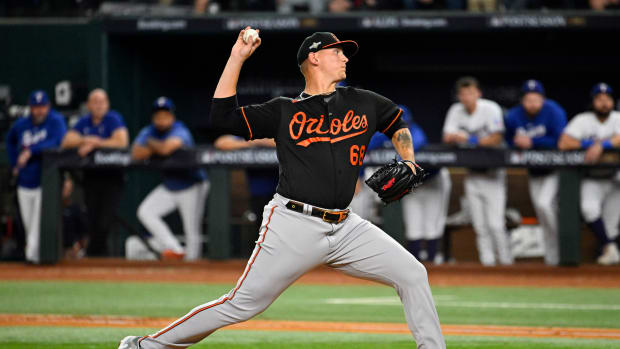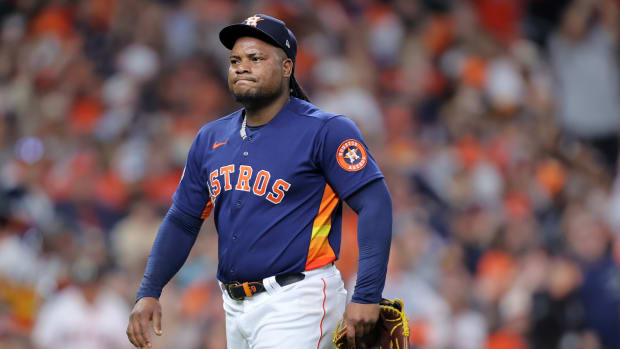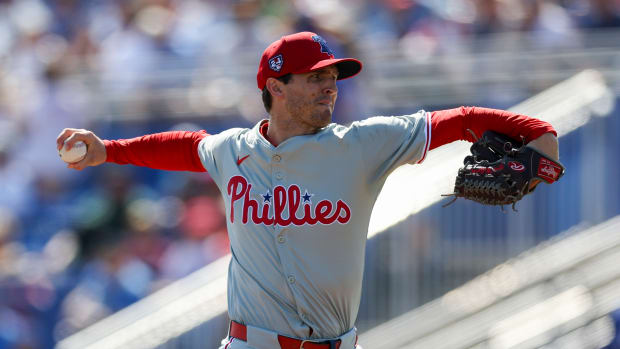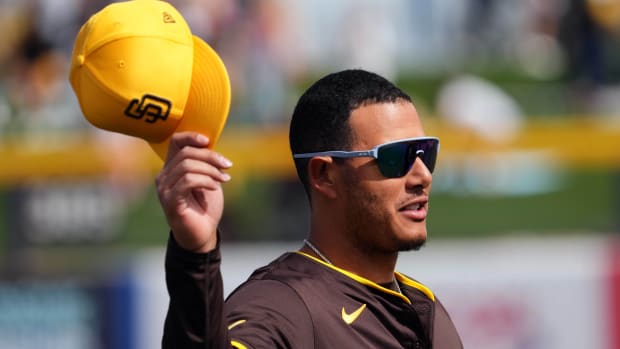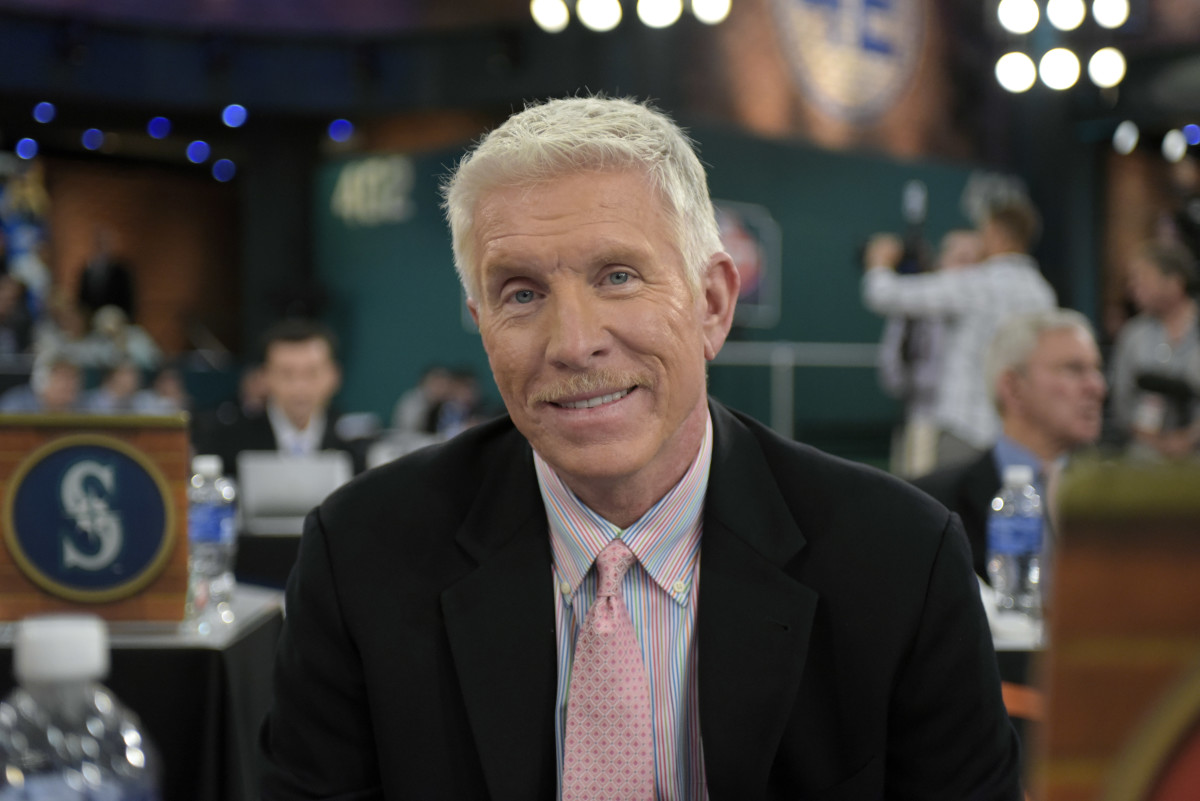
Hall of Famer Mike Schmidt: Hitters need to do the shifting
It took teams close to 100 years to make the drastic defensive shifts we see now. And it's evident every day the effect they're having on offensive performance.
Back in the 1970s and `80s, defenses shifted on a handful of players, but only a bit. Against Willie Stargell and a few other lefty power hitters, the shortstop would move right of second base, and the second baseman played slightly on the outfield grass.
Nothing close to the current alignments.
Modest shifts, not much more than normal pull defenses, were standard against guys like Johnny Bench, George Foster, Andre Dawson and myself. The conservative nature of baseball coaching back then wouldn't support what they do today.
The dramatic changes are based on hitting patterns logged by scouts and MLB with stadium tracking technology. They can also measure the speed of batted balls and distance traveled. More information for us to enjoy!
With computer-generated hitting charts, managers can align defenses accordingly, shifting players from areas where hitters don't hit balls to the areas where they consistently do. Why not use this information to your advantage if it's available?
One would think the pitching plan would be one to entice hitters to hit into the shift. For example, overshifting on a left-handed pull hitter would require a pitcher to pitch inside and off-speed.
Quite the contrary: Shifts are against hitters that pull all pitches on the ground. Pitchers have the freedom to ignore the defense, understanding that all pitches hit on the ground will be pulled into the bunched fielders.
What about balls hit in the air? If you study shifted defenses, you'll see a normal outfield alignment, because these hitters have a different pattern on flyballs.
It's groundballs and line drives that once were hits that the shifts turn into outs.
Here's the best example of this. Ryan Howard has battled the shift all year. In recent years, he has become almost 100 percent pull right of second base on the ground, and straightaway in the air. Second basemen have moved to short right field and third baseman to second base.
I asked my broadcasting partners, who see him every day, how many hits they felt the shifts have taken away from him this year. The conservative answer was around 15. It could be 25, but let's use 15.
With those 15 hits, Howard would be hitting around .320 and would have many more RBIs. Understand, Howard has not had a year so far indicative of a $25 million player, and a big reason is the shift.
Each team has several players who are subject to defensive shifts. Most not as severe as Ryan Howard, but still exaggerated enough to stop normal safe hits. All of these hitters have lost significant hits and accompanied production, so what should they do?
Fans watch and scratch their heads as to why hitters just don't slap a ball where there are no fielders. There is some legitimacy to that argument. But from experience myself, I know that one, it's not that easy, and two, opposing managers want game-breakers to do just that, poke a ball the other way.
In fact, opposing managers want the temptation to ''beat the shift'' to be in the hitter's mind. The opposition wants the power guys to steer the ball to the opposite field on the ground, eliminating the home run or the ball driven in the gap. They want these hitters to alter their strokes.
The shift is designed to take away hits, of course, but it also entices hitters to abandon their game in favor of a base hit.
Going forward the question is will managers require hitters to learn to hit away from the shift when the situation asks for it? Leading off an inning when behind in the score, driving in a run with two outs, even learning to bunt a ball away from the shift might be required.
I use ''required'' very loosely in this day in age as sluggers seem to have a mind of their own, all out, all the time. Take it from one, nothing feels worse than trying to guide a fastball to the right side and hitting a weak popup.
One other element I find fascinating here is the effect this has on left-handed hitters. Since the beginning of baseball, lefty hitters have had a distinct advantage because the field runs counterclockwise. First base is to their right or pull side, allowing them to hit in the gigantic hole between first and second and be several steps closer to first base.
The defensive shift on that side has neutralized their advantage. Righties don't see that as much - the distance of the throw to first base from shallow left field prohibits drastic shifts that way.
One thing for sure, becoming a predominantly pull hitter is asking for trouble.
Again, look at Ryan Howard. The hits he's lost won't show up with an asterisk on the stat sheet. This is hard contact, balls that used to be hits that are now outs.
Howard is 35 years old and will have no interest in changing his style, nor will other power hitters in this same predicament.
I hope hitting coaches at the minor league level are aware of what pull hitters are facing and work to develop young hitters away from this style.
The concern about declining offense in baseball is real. Shifts are one reason, as is the steady development hard-throwing pitchers.
But take it from me, it's time hitters embrace this and accept the need for change. If this trend continues, a new normal is upon us.
Howard is a perfect example. By consistently hitting into the shift, he has no chance of reaching previous production levels. He is just one of many power hitters today who have a choice to make, and it won't be easy.
Finally, if you look at consistently successful offensive teams in baseball such as the Cardinals and Giants, you'll see clubs with fewer pull hitters. Hitters more difficult to defend, hitters that grind out at-bats, make contact, and play an offensive game that percentages favor. Defending these teams is difficult because they're unpredictable.
The hitting charts have dots everywhere, not just on the pull side. St. Louis and San Francisco, you won't see the shift against them so much.
Need I say more?
---
Hall of Famer Mike Schmidt was a three-time NL MVP and hit 548 home runs for Philadelphia. He is now part of the Phillies' broadcast crew.































